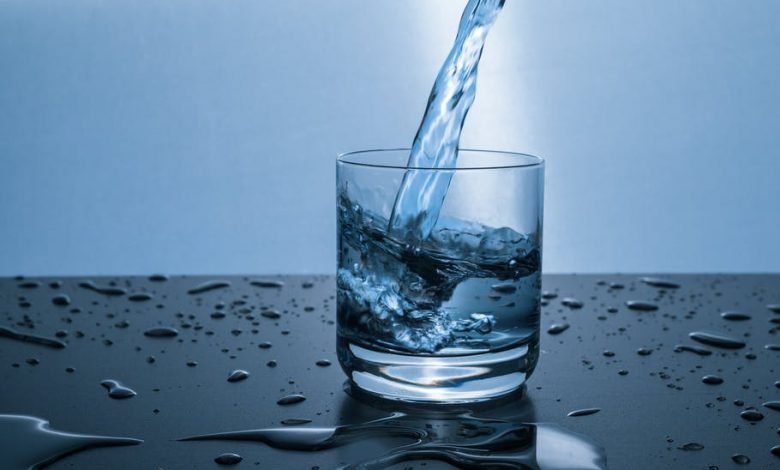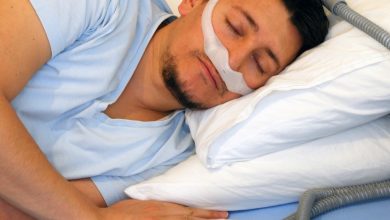Everything You Need To Know About Bacteriostatic Water And Its Uses

Did you know that a milliliter of freshwater can contain one million bacterial cells? While most aren’t harmful, others are pathogenic and can cause disease. From cholera to skin infections, these are a few of the illnesses bacteria in water can cause.
In the US alone, waterborne diseases afflict an estimated seven million people each year. They affect even healthy people, but those already sick are at a higher risk of complications.
For that reason, some medicines specifically require preparation with sterile water. Bacteriostatic water is one such type of water.
So, what is bacteriostatic water, and what are its uses? How does it even differ from other types of water?
This guide will answer all those questions, so be sure to read on.
What Is Bacteriostatic Water?
Bacteriostatic water is one of the eight types of water used in pharmaceuticals. It consists of sterile and filtered water and 0.9 percent benzyl alcohol.
Benzyl alcohol, in turn, is an antimicrobial preservative. It also goes by the name benzene methanol or phenylcarbinol. It comes from fruit, has a light sweet scent, and is a common ingredient in skincare products.
The use of benzyl alcohol in bacteriostatic water is to stop the growth of bacteria in the water. It doesn’t kill microorganisms outright, but it suppresses their reproduction. This is how it preserves the sterile water for multiple, later use.
What Is Bacteriostatic Water Used for Then?
Bacteriostatic water is a diluent or a solvent for medications used in injections. A diluent is a substance used to dilute or make a liquid thinner or weaker. On the other hand, a solvent is a substance that dissolves other materials to create a solution.
With that said, one primary use of bacteriostatic water is to reconstitute medications. Reconstitution refers to the process of adding a diluent to a dry ingredient, such as a powdered drug. This way, the medicine turns into liquid form, making it fit for injection.
For example, some injectable medicines that treat hormonal problems are in powdered form. As such, some require you to mix them with bacteriostatic water first. This way, the special sterile water can dissolve the powder, and you can then inject it.
Another example is an ertapenem injection, used for treating certain serious infections. This medicine also comes in powdered form; thus, you need to reconstitute it first. Bacteriostatic water is one diluent you can use for this injectable drug.
Another medicine that bacteriostatic water can reconstitute is Myalept (metreleptin). It’s an injectable drug used alongside diet to help treat leptin deficiency.
What Are the Advantages and Benefits of Bacteriostatic Water?
Aside from bacteriostatic water, some injectable medicines can also use sterile water. However, the former is simply sterile, distilled water. It doesn’t contain any antimicrobial agent or other substances.
Thus, you can only use a vial of sterile water for injection once. For the same reason, you’ll only find this product in single-dose containers.
On the other hand, you can use a vial of bacteriostatic water several times. That’s because its antimicrobial content stops bacteria (that might contaminate it) from multiplying.
So, why don’t bacteriostatic water manufacturers just use anti-bacterial instead? The reason is that many anti-bacterial agents can interact with other medications. By contrast, benzyl alcohol has no known severe interactions with other drugs.
In that way, benzyl alcohol makes bacteriostatic water usable in more applications.
Can’t You Use Filtered Water?
The CDC says that no water filter is 100% effective in getting rid of drinking water contaminants. Yes, they can help make your drinking water safer, but they don’t remove all contaminants. Thus, some bacteria and fungi can remain in treated drinking water.
Unfortunately, using non-sterile water for injections can cause bacterial and fungal infections. These include those caused by germs like invasive staph, strep, and candida.
From there, the infections can spread to and harm other parts of the body. The infections can also cause sepsis, a life-threatening condition. Sepsis can happen to anyone, but some people, such as those who take medications, can be at a higher risk.
Since filtered water isn’t sterile, using it for injections can put you at risk of such illnesses.
As such, always use sterile or bacteriostatic water as directed by your doctor.
Remember: you can only use sterile water once, so discard its vial right after its first use. If you’re going to use bacteriostatic water, though, you can draw from the same vial several times.
However, you may have to dispose of any unused bacteriostatic water after about 28 days. Check the label to be sure; it should tell you how many days you have to use the water after opening the vial.
Are There Other Uses for Bacteriostatic Water?
The only indication for bacteriostatic water is its use in injection preparations. The injections, in turn, can be intravenous, intramuscular, or subcutaneous.
Intravenous means within a vein. On the other hand, intramuscular means in the muscle. As for subcutaneous, it means under the skin.
Please note that you should only use bacteriostatic water as a diluent or solvent. Injecting this substance alone into a vein can cause a condition called hemolysis. Hemolysis is the process in which red blood cells rupture.
Is Bacteriostatic Water Safe?
Bacteriostatic water is safe for older children and adults but can be toxic to newborns. The potential harm it can cause in these babies may arise from its benzyl alcohol content. Previous studies have linked benzyl alcohol with many severe reactions in infants.
The effects of bacteriostatic water for injection in pregnant women are also unknown. For this reason, it may be safer to use sterile water in expectant mothers.
Use Medical Bacteriostatic Water Only as Prescribed by the Doc
There you have it, the ultimate answer guide to the question, what is bacteriostatic water? Now that you know what it is and what it’s for, please be sure to use it only as directed by your doctor. Always keep in mind that while it’s safe for older kids and adults, its improper use can still cause side effects.
If you’re looking for more informative guides like this, we have you covered. Feel free to browse our other recent news and blog posts on health, fitness, and lifestyle.





Thanks for sharing. I read many of your blog posts, cool, your blog is very good.
CBD exceeded my expectations in every way thanks traveling with cbd . I’ve struggled with insomnia on years, and after infuriating CBD in the course of the first time, I finally knowing a complete evening of restful sleep. It was like a arrange had been lifted off my shoulders. The calming effects were indulgent despite it sage, allowing me to inclination slow naturally without sensibilities punchy the next morning. I also noticed a reduction in my daytime desire, which was an unexpected but receive bonus. The partiality was a bit earthy, but nothing intolerable. Blanket, CBD has been a game-changer quest of my nap and solicitude issues, and I’m grateful to keep discovered its benefits.